A brief introduction to the Maelstrom

Maelstroms are the most unforgiving environment in the game. Study the Infrographic.
The Caustic Cloud is a source of permanent damage on any Ship entering it, caustic will continue to stack until you reach the center of the Maelstrom or exit it entirely.
Caustic Generators spread caustic while also serving as Mines, exploding when approaching too close and being too hot.
You can gather Caustic Materials in the caustic cloud.
Thargoid Interceptors will patrol the Caustic Cloud, try to remain at a distance.
If a patrol noticed you go cold using silent running or Heatsinks and boost away to try and shake them.
“Thargoid Maelstroms have a permanently active Anti-Guardian Field“
All Thargoid Maelstrom Systems have a permanently active Anti-Guardian Field (“AGF”).
Guardian Modules and Weapons cannot be used in Titanspace without Anti-Guardian Zone Resistance engineering from Ram Tah, with the exception of Guardian Hull Reinforcement Packages. Even then, the extra power requirement can be an issue for cold running Titanspace builds.
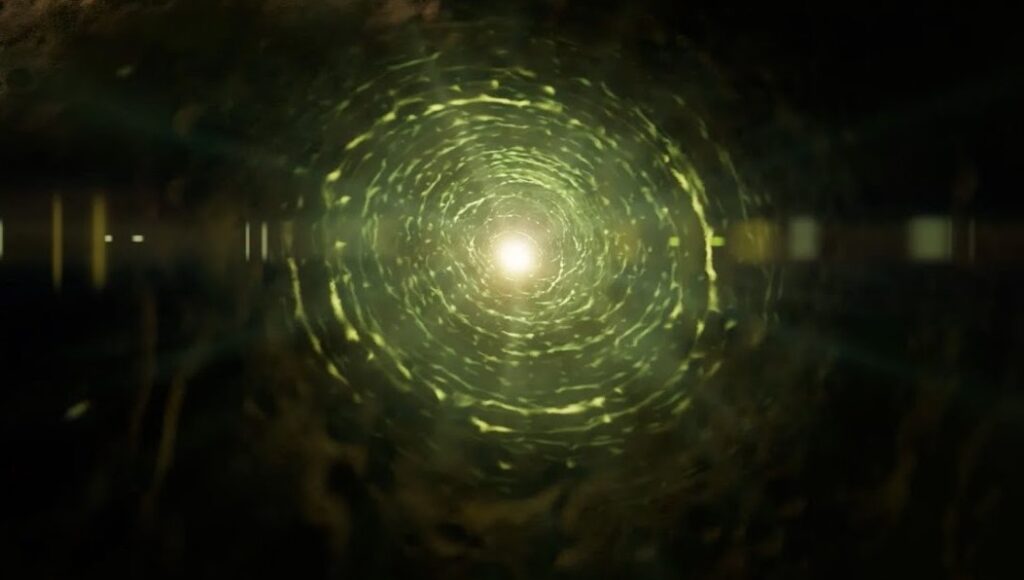
Commanders journeying to the Maelstreom will have to deal with regular interdictions by Thargoid craft.
Once the interdiction tunnel is established the action can not be won – it is adviced to 0 the throttle and submit.
Submitting will put your FSD on minimal cooldown after dropping, shortening the time you need to endure the attack until you can go to Supercruise again.
Titanspace
Even merely getting to the center where the Titan is located requires specialized equipment. Namely a Thargoid Pulse Neutralizer (“TPN”) and a Caustic Sink Launcher (“CSL”.) Travel as fast as you can through the Caustic cloud and block the Titans expulsion Wave with your TPN like you would an Interceptors Shutdown Field.
Watch out for any Thargoid Patrols and Caustic Generators (Mines) on your way, get cold/use silent running if necessary.
Once you get into Titanspace, avoid the Asteroids surrounding the Titan and be aware of the “Seed Generator” Mines scattered around the Asteroid Field. They will explode upon detection through heat or minimum distance similar to Caustic Generators.
“We refer to the area inside of a Maelstrom’s caustic cloud as “Titanspace” for simplicity.”

Titanspace is uniquely challenging.
It is very difficult to maneuver, let alone fight, in Titanspace.
Study the Infographic closely.
It is recommended to run cold ships at below 20% Heat output to avoid wider detection and Titan-defenses lock-on.
However, Thargoid patrols can lock on to you if they establish line-of-sight, when that happens you will also be targetable by the Titans defenses. Your options will be dodging, fighting it out, breaking line of sight/hiding in a safe spot or retreating to the Asteroid field.
Have a look at this clip from one of CMDR Mechan’s Streams
Titan Alert
Titan Alert levels are Green, Yellow, Orange, Red and finally Blue when firing Torus.
The Titans Alert Status determines the instances behavior to a degree – at green the Titan is calm, most patrols will head out and jump away if green status persists. In Orange or above most Patrols will stick around, they know something is up. Red means Thargoids are engaged.
Alert status climbs if Thargoid vessels spot you, you shoot at any of them or the Titan itself, miss a drill missile, or you collide hard with the surface of the Titan. Alert level lowers once you are cold and out of sight of any patrols. Head to hiding spots or the Asteroid Fields to let the instance calm down.
The Alert level can be visually identified by the coloration of the Titans “veins” texturation, most notably on the bottom Side of the Titan.
Green Alert
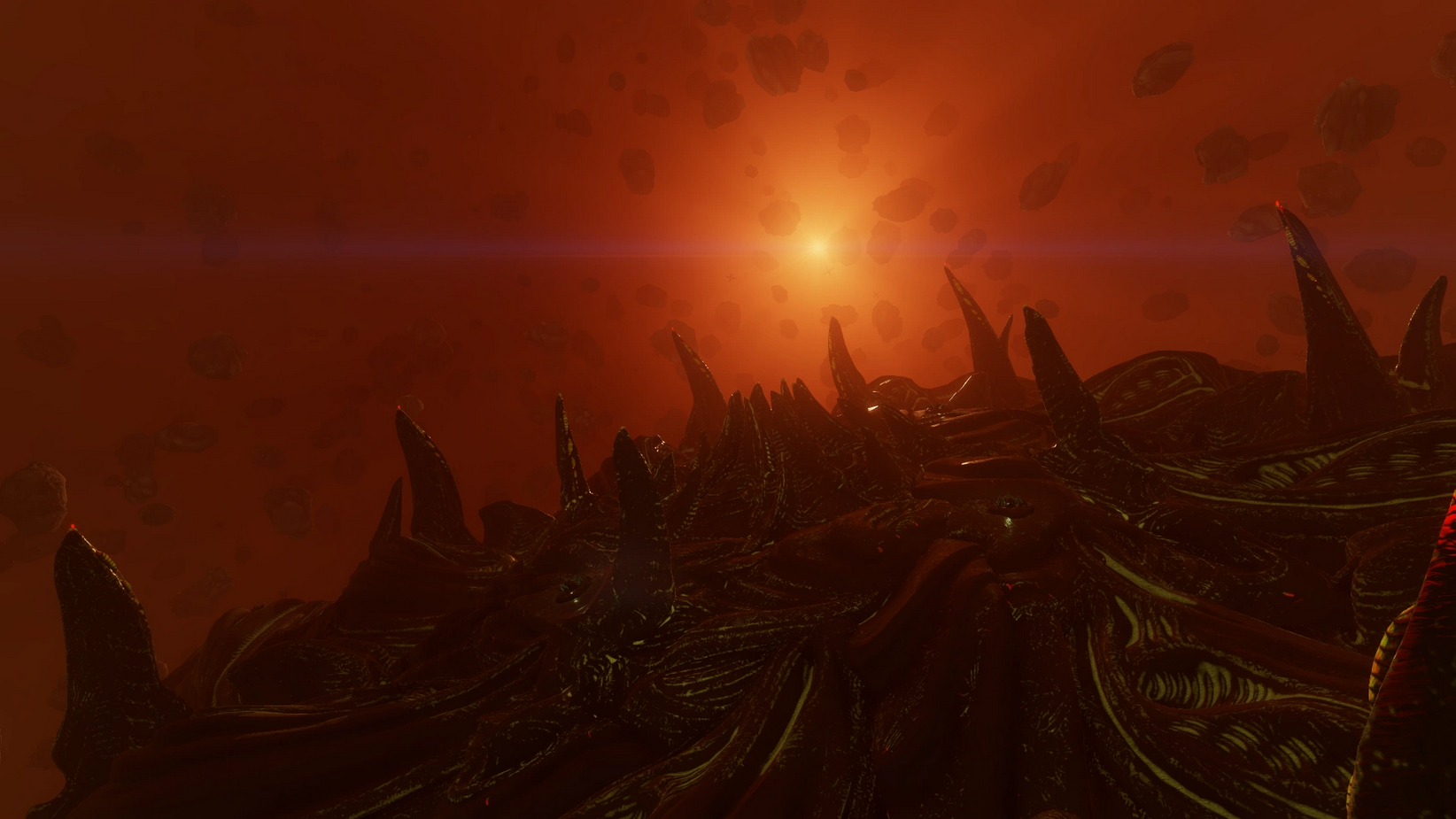
Red Alert
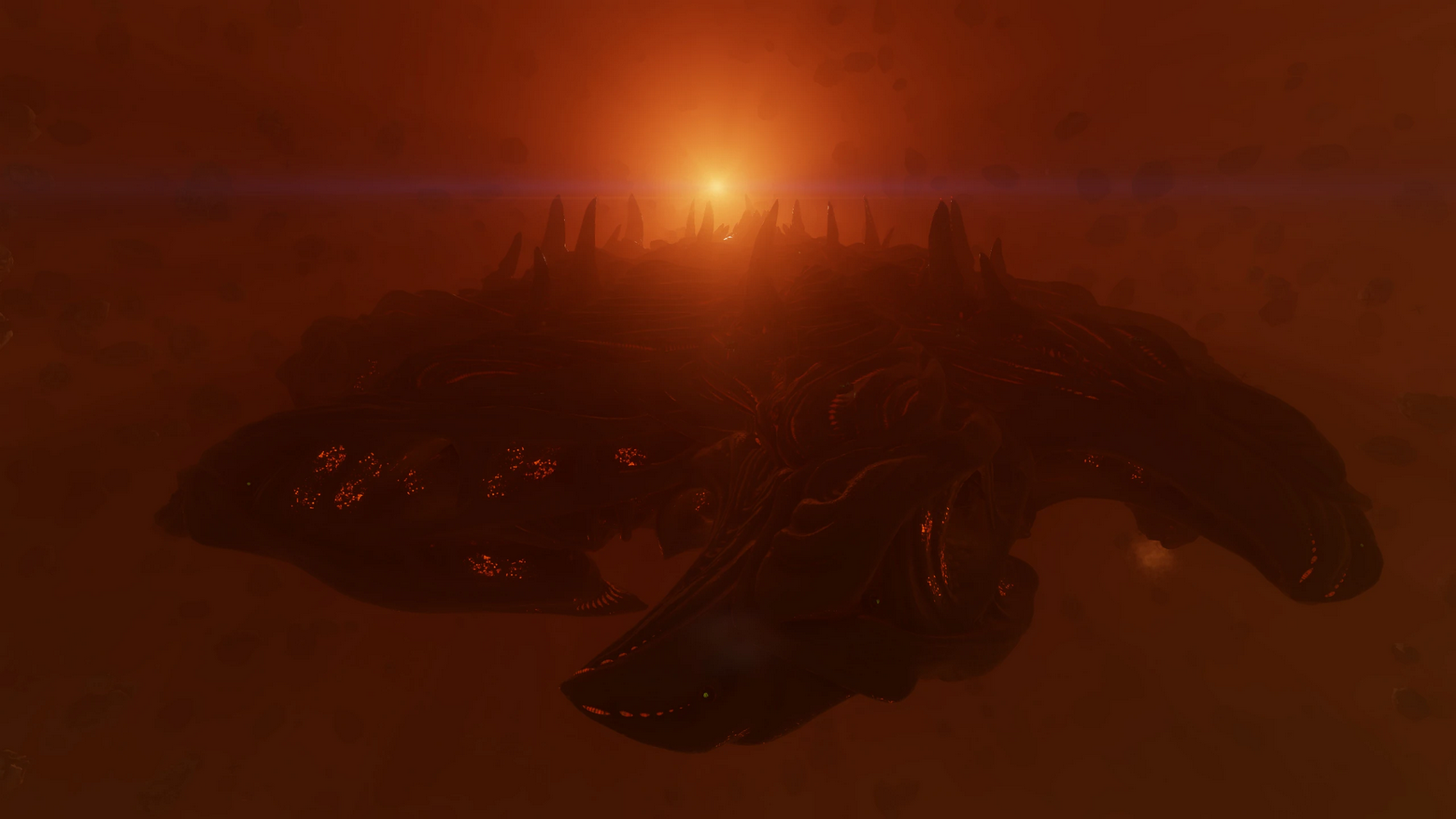
If the threat level keeps rising the Titan will ultimately fire its blue “Torus” field at some point.
The torus field inflicts damage and makes ships partially immobile.
When that happens you should either retreat to the Asteroid Field or head to the save “Cones” emitting from the top and bottom of the Titan.
Blue Torus
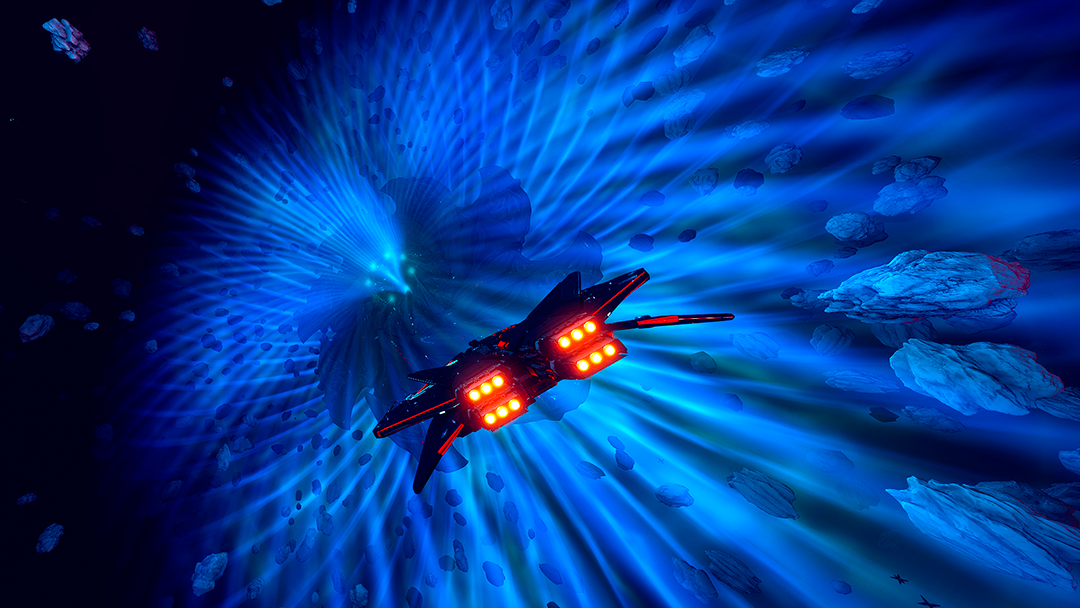
Torus Sideview and safe Cones
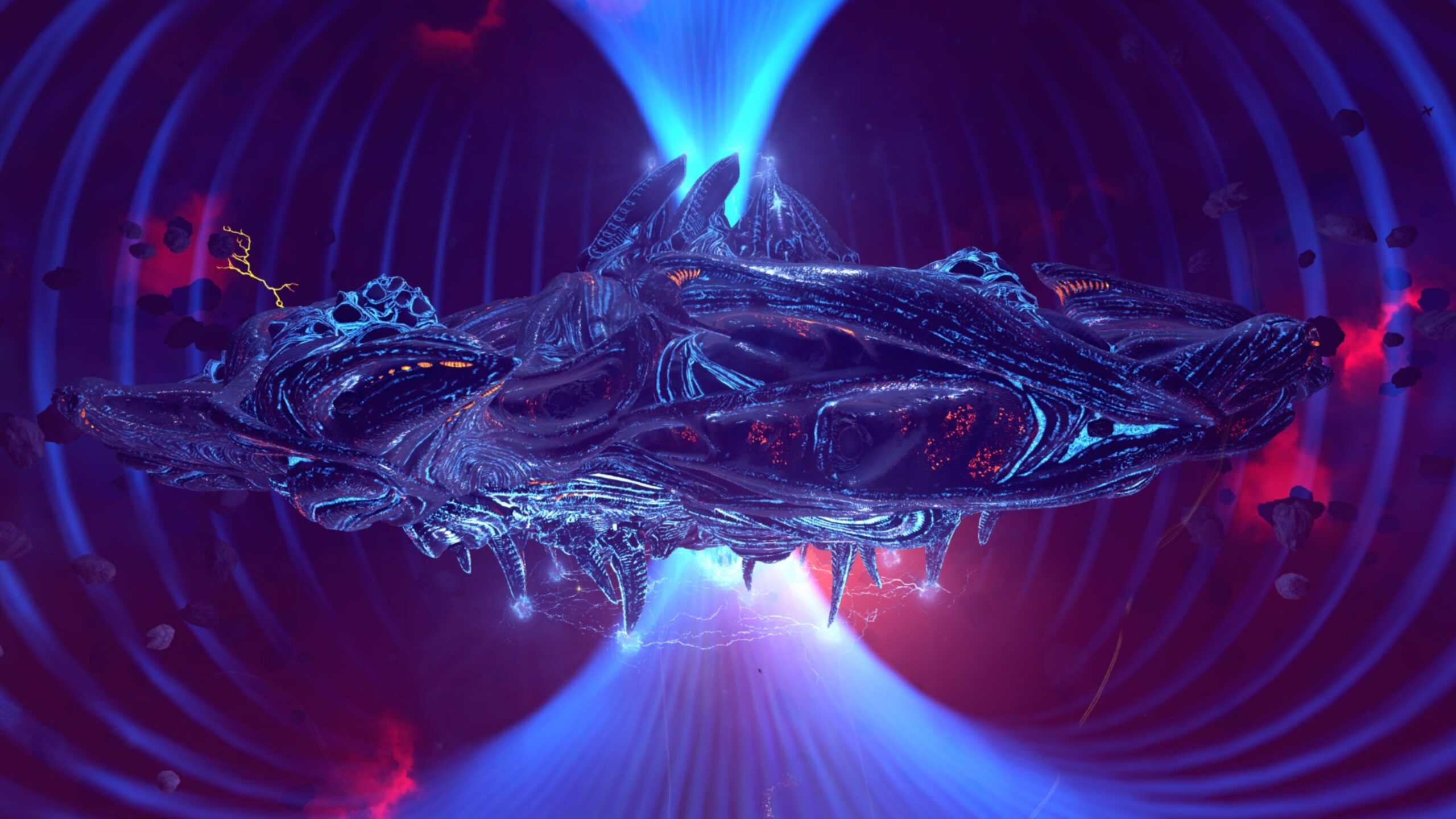
Patrols in Titanspace
There are several types of Thargoid craft patroling Titanspace.
Interceptors, Scouts, and Hunters. Hunter patrols will be mainly Glaives – with their brethren the Scythes spawning more rarely unless Bio-Storage Capsules are being extracted.
There is currently a bug concerning Scythe Hunters – where killing a Scythe can cause Commanders in the Instance to crash / their game freeze. Scythes are not interesting to bombing activities, so they should be left alone.
Glaives are annoying and hard to avoid – they need to be focused down quickly if they aggro.
They are Thargoid vessels of the Hunter Class. They can be visually distuingished from their close relatives the Scythes by their brown-greenish color and two “wheels” of 4 spokes each, one rotating clock- and one counter-clockwise. They are very fast.
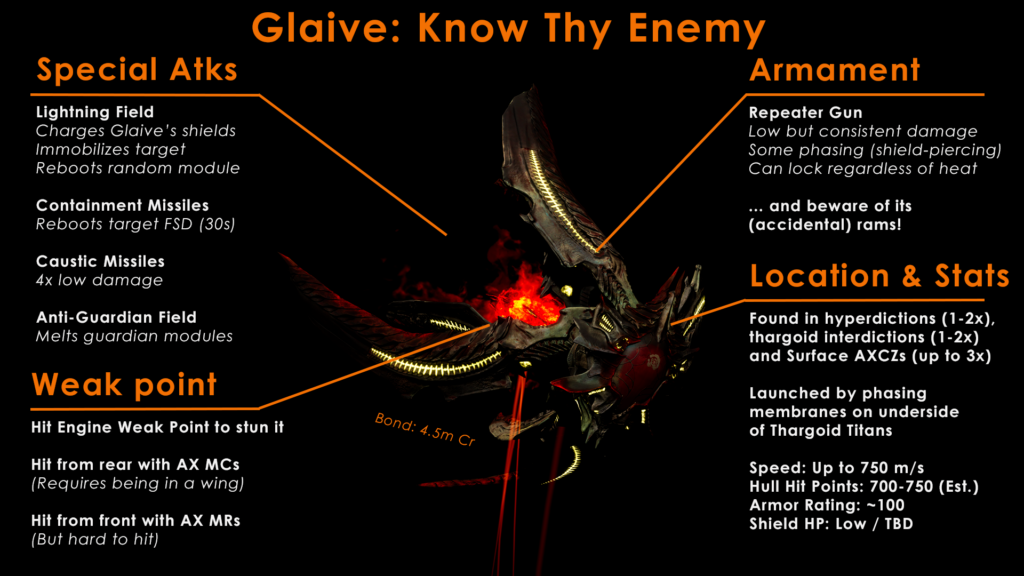
Titan Bombing
Titanbombing is achieved by compromising the Titans Heat Vents with Guardian Nanite Torpedoes when they open during their venting cycle.
The Heat Vents are located on the 8 outer petals/jags of the Titan on the Maw-side.
The Vents open after about 75 seconds (if the script is not interrupted by people joining/leaving the Instance).
They remain open about 45 seconds.
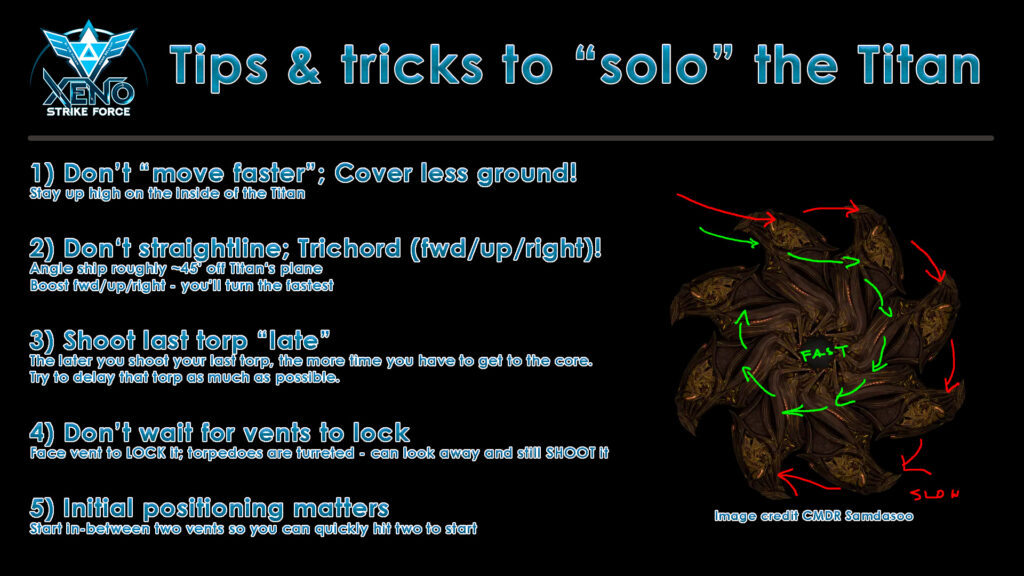
This will force the Titan to expose its Thermal Core on the backside to open space in order to cool down – making it vulnerable in the process. Attack the Thermal Core with AX Weapons to damage it while it is extended.
After Thermal Core exposure and damage to the core the Titan will always fire its Torus attack.
Have a look at CMDR Mechan’s Titan Bombing Guide
Practices to prevent instance-break while bombing
The Titans Bombing-Cycle, Core-extention, and Torus move Scripts are finicky. Breaking or getting stuck easily from p2p disruption by Commanders entering or leaving the Instance.
Therefore it is mandatory practice for Commanders to NOT enter or leave the Maelstrom Instance while the Vents are getting bombed, the Titan Core is extended or the Titans Torus is firing.
CMDRs looking to join or leave should ask for permission prior to not break the Instance by accident.
The downtime between the Titans Torus and the next bombing-cycle is the time for that. Important to Note is that dropping from Supercruise at the Edge of the Maelstrom already counts as entering the Instance! Waiting CMDRs need to hover in supercruise.
It is recommended that only 1 Commander should hit the Titans Heat Vents with Nanite torpedoes during the Vent-cycle to further mitigate the risk of the script breaking. Any number of Cmdrs can hit the exposed Thermal Core.
Watch this briefing to prepare yourself for the Assault on a Titan
Related Resources
Please visit our Maelstrom Fighters & Bombers page for Ship build recommendations and build theory for this harsh environment.
To save humans by extracting Bio-Storage Capsules please visit our Maelstrom Search & Rescue page.
Click here to see the Rewards for participating in the Assault on a Titan.

